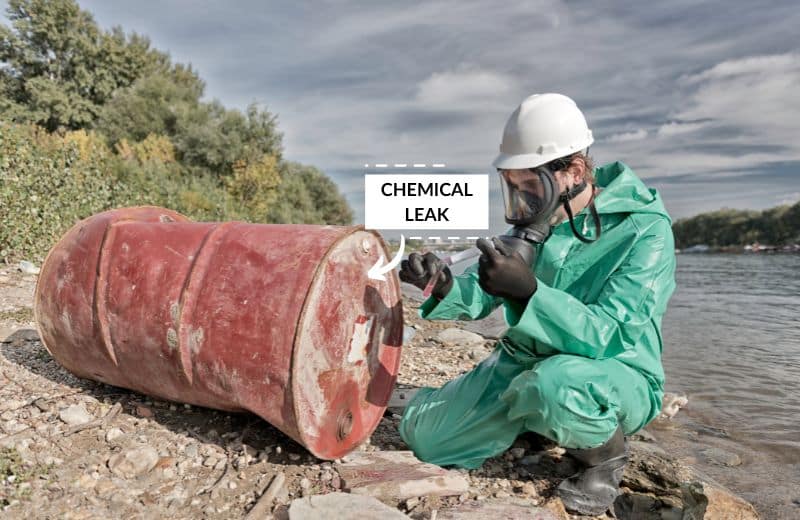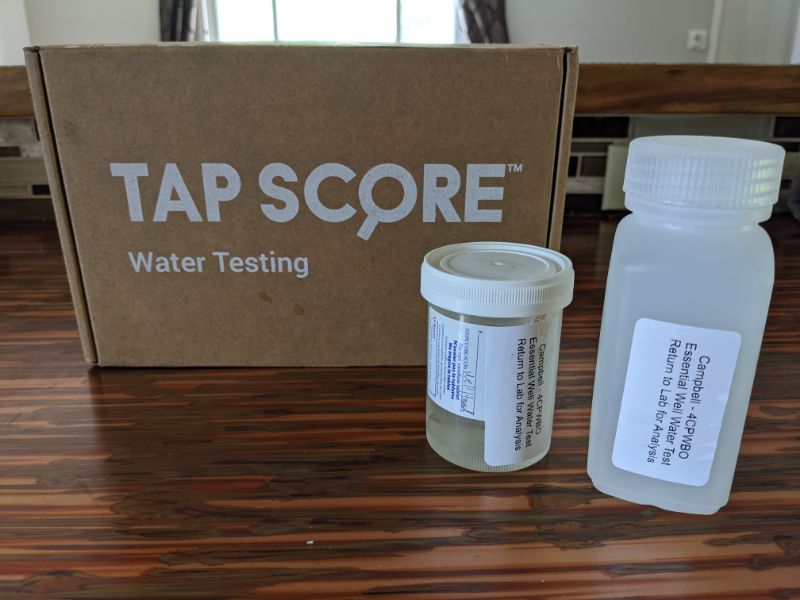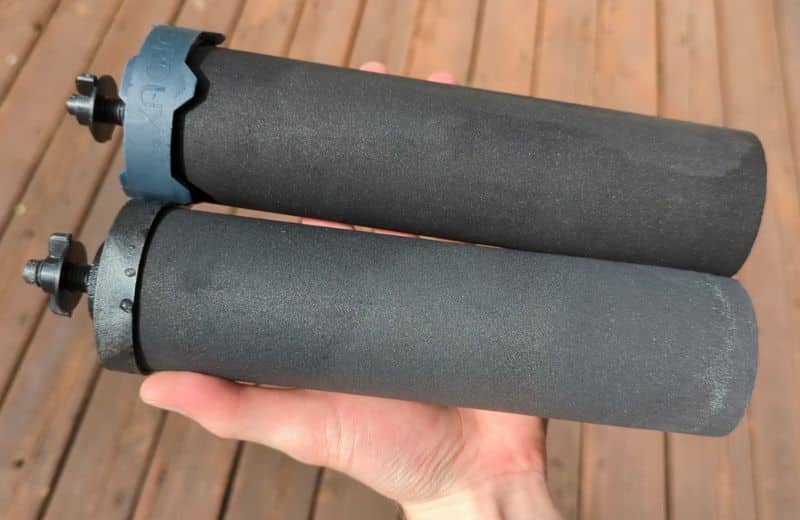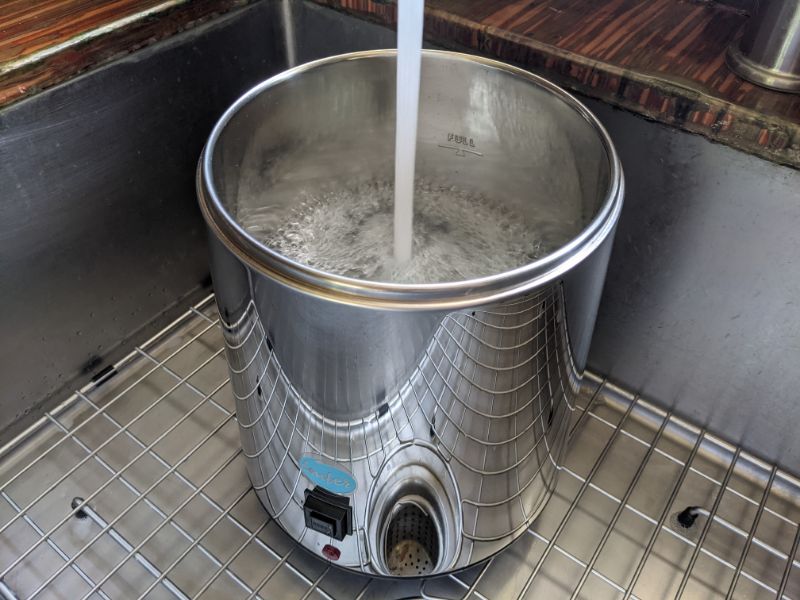Vinyl chloride is the latest concerning contaminant to have hit the news – and you’re not alone if you’re keen to remove this hazardous chemical from your drinking water.
In this guide, we’ve shared the best methods of reducing or removing vinyl chloride from your tap water.
📌 Key Takeaways:
- Vinyl chloride is a colorless gas with a sweet odor that is used in numerous manufacturing processes, agricultural products, and polyvinyl chloride (PVC) pipes.
- The best ways to reduce this chemical compound in your water supply are with activated carbon filters, RO systems, and water distillers.
Table of Contents
🤔 What Is Vinyl Chloride & Where Does It Come From?
Vinyl chloride is a colorless gas and volatile chemical that’s used in both gas and liquid form in numerous industrial and agricultural applications.
This slightly soluble chemical may cause health problems including increased cancer risk and damage to the central nervous system.
Vinyl chloride may get into water due to:
- Industrial discharge from plants using this chemical in plastic packaging materials, wire, cable coatings, and other plastic products.
- Chemical spills and leaks.
- Leaching from PVC pipes.
The Environmental Protection Agency has set a Maximum Contaminant Level (MCL) of 2 PPB (parts per billion) for vinyl chloride in drinking water.

🩺 Potential Health Effects of Vinyl Chloride
So, how does vinyl chloride affect human health?
There are several known adverse health effects of vinyl chloride exposure, including:
- Cancer. Vinyl chloride is known to cause an increased risk of liver cancer and other cancers in humans, especially if low levels are consumed over a long time period.
- Nervous system damage. Exposure to large amounts of vinyl chloride may also damage the central nervous system and immune system, causing “vinyl chloride disease“.
- Other health problems – Long-term exposure to vinyl chloride may have other human health risks, including liver damage and disease.
Looking for more background information? You’ll find it in our guide to vinyl chloride in drinking water.
🧪 How To Test For Vinyl Chloride In Water
How do you know if your water is affected by vinyl chloride contamination? We recommend conducting a drinking water test.
Your average $10 test kit probably won’t test for this VOC. But a thorough laboratory test should.
You can find laboratory tests that detect a range of VOCs, including vinyl chloride. Some labs may also test solely for this contaminant.
Here’s how to test your water with a laboratory test:
- Order a test kit online.
- Using the included vial, take a sample of your water from your kitchen faucet.
- Send the sample back to the laboratory.
- Wait for the test results (usually up to 2 weeks).
A good laboratory water test should tell you not only whether or not your water contains vinyl chloride, but also how much of this chemical has been detected, and its potential health effects at this concentration.
The cost of a state-certified lab test is around $60-$250, depending on the quality of the test and the parameters you’re testing for.

✅ How to Remove Vinyl Chloride from Drinking Water
Now we know how to test for vinyl chloride, what can you do if you reduce this volatile chemical compound in your water?
For water treatment plants, the Environmental Protection Agency (EPA) recommends packed tower aeration. But this takes place in large tanks and isn’t suitable for residential applications.
The best ways to reduce or remove vinyl chloride from water at home are:
Granular Activated Carbon Filters
Granular activated carbon (GAC) filters offer the most effective and affordable vinyl chloride reduction.
A GAC filter is made from loose carbon particles and has a large surface area, meaning that it can trap the majority of targeted contaminants as water flows through.
Granular activated carbon filtration uses a process called adsorption, where particles in the water are pulled into the filter media, while water particles pass through the filter pores.
GAC filters offer a longer contact time between water and the filter media compared to other activated carbon filters, meaning that a greater number of contaminants can be removed.
Alongside vinyl chloride, GAC filters can remove other volatile organic compounds, some heavy metals, and chlorine, taste and odor.
You can find GAC filter cartridges in a range of filter types, including water filter pitchers, countertop filters, under-sink filtration systems, and whole-house water filters.

Reverse Osmosis Systems
Reverse osmosis systems are another vinyl chloride reduction solution. An RO water filter is a great choice if you want to reduce not only your exposure to vinyl chloride, but also the majority of other total dissolved solids in tap water.
RO systems use a semi-permeable membrane, which traps the majority of impurities. However, one of the few groups of contaminants that this membrane doesn’t protect against is VOCs.
It’s actually the activated carbon filter stage in an RO system that reduces vinyl chloride. So, if your main goal is to remove vinyl chloride and you’re not bothered about purifying your water, you may as well save your money and opt for an activated carbon filter on its own.
The most common RO system types are under-sink and countertop units. You can also find whole-home RO systems, but they’re very expensive.
Water Distillers
Finally, water distillation is another purification method that can be used to reduce the majority of drinking water contaminants, including vinyl chloride.
A distiller works by boiling water until it evaporates, then sending the vapor down a cooling corridor, where it condenses into a separate container.
Most impurities are trapped in the boiling chamber because they have much higher boiling points than water. Or, in the case of vinyl chloride, they evaporate from water but are unable to condense once cooled.
Some types of vinyl chloride can dissolve back into water, but distillation will reduce most of this chemical – and the final-stage activated carbon filter should remove any lingering VOCs before the purified water leaves the spout.
Most distillers are countertop units, but there are a few larger standalone units that are better for distilling big batches of water.

🥇 Which Water Filters Are Best For Vinyl Chloride Removal?
The best type of water filter for vinyl chloride reduction depends on your own personal preferences and budget.
If your budget is small, consider a water filter pitcher or single-stage under-sink filter that uses activated carbon filtration. You can spend less than $50-$75 upfront on a carbon filter that’s capable of reducing or removing vinyl chloride.
💡 Our top choice for the best water filter pitcher for vinyl chloride reduction is the Clearly Filtered Pitcher, which can remove up to 99.8% of vinyl chloride.
If you have a bigger budget and you want to filter all the impurities out of your water, a reverse osmosis system is the best option. RO systems cost $150-$650 on average, depending on their configurations, tech features, and capabilities.
Regardless of the filter type you go for, make sure it has plenty of great customer reviews and is sold by a trusted manufacturer.
Since vinyl chloride is a specific type of VOC, it might not be listed as a contaminant that can be removed – even if it can. Reach out to the manufacturer and ask to see test results if you want to be absolutely certain what a filter can remove.
❔ FAQ
Does vinyl chloride dissolve in water?
Yes, some types of vinyl chloride dissolve in water. Most commonly, though, vinyl chloride gets into water if it has already been converted into liquid form, due to surface runoff or leaks and spills.
Does vinyl chloride evaporate?
Yes, in liquid form, vinyl chloride evaporates quickly. If vinyl chloride is near the surface of water, it evaporates into the air. This chemical can also evaporate in the same manner from soil.
Does boiling water remove vinyl chloride?
Yes, boiling water reduces vinyl chloride, but it shouldn’t be used as a failsafe method to remove this chemical entirely. Boiling water encourages vinyl chloride to evaporate at a faster rate, but only the particles near the water’s surface would evaporate. In short, boiling water reduces the concentration of vinyl chloride but doesn’t guarantee complete removal.
Does reverse osmosis remove vinyl chloride?
Yes, reverse osmosis can reduce or remove most VOCs, including vinyl chloride, from drinking water. Installing an RO filter system is one of the best ways to protect your family from drinking this toxic chemical.
Can a water filter be NSF certified for VOC removal?
No, there isn’t currently a dedicated NSF certification for VOCs, let alone one for vinyl chloride. However, a reverse osmosis system can be tested and certified for its contaminant removal abilities, including its ability to reduce vinyl chloride. If an RO system has an NSF-ANSI 58 certification, check which contaminants it’s certified to remove.

